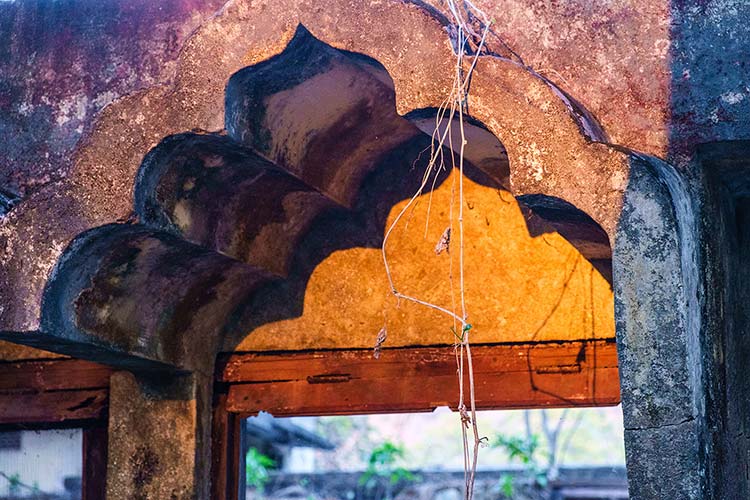
“The source of all my knowledge is Maharishi Mahesh Yogi, everything that anybody likes about me, whatever they think they like, they’re really liking the sculpting that Maharishi did on me.”
Thom Knoles
Episode Summary
Continuing the occasional series of My Maharishi episodes, Thom gives us a few very brief highlights of a truly accomplished life.
Thom shares how Maharishi Mahesh Yogi was larger than life in spite of his small and gracious appearance. He tells us how his title of “The Giggling Guru” contrasted with his ability to satisfy questions about the deepest and most serious aspects of life.
Thom describes how Maharishi embodied the teachings of his own teacher, Swami Brahmananda Saraswati, or Guru Deva as he was more widely known, and how he became a guru himself.
He also shares how Maharishi first came to teach the meditation practice that we teach today, and why teachers of Vedic Meditation, before teaching a new student, always acknowledge our lineage of teachers that have come before us. Thom reflects on his reply when others ask how Maharishi Mahesh Yogi died, and how, in the hearts of his students, Maharishi Mahesh Yogi is alive always.
It’s a short but delightful episode that will give insight into the origins of what has become a worldwide phenomenon, the practice that is raising consciousness throughout the world. Most importantly, Thom will share how his journey of discovery with Maharishi Mahesh Yogi inspired him to teach this Vedic Meditation, and what drew him to teaching–in hopes that you may choose to join him.
Subscribe to Vedic Worldview
Episode Highlights
01.
Guru – Remover of Darkness
(00:40)
02.
Balletic Grace
(02:32)
03.
The Giggling Guru
(04:12)
04.
Learning by Osmosis
(05:51)
05.
A Body as an Agent of Evolutionary Change
(07:25)
06.
Big, Important and Urgent
(08:38)
07.
Rameswaram
(09:30)
08.
The Grace of Guru Dev
(11:00)
09.
Folded Hands Everywhere
(12:19)
10.
I Want to Replicate Myself
(14:00)
11.
Knowledge That Has Stood the Test of Time
(15:24)
12.
He Made Me
(16:30)
Jai Guru Deva
Transcript
Guru Maharishi Mahesh Yogi
Guru – Remover of Darkness
Maharishi Mahesh Yogi was my teacher and continues to be my deep inspiration. He dropped his physical form in the year 2008, but his physical form doesn’t really explain what he was. He wasn’t so much a “who” to me as he was a “what” to me. What was he?
[00:01:08] So for me, and to me, he was my guru. The word guru in Sanskrit means a remover of darkness. Someone who removes darkness by doing what? Well the implication is by shedding light, by illuminating things.
[00:01:27] Maharishi Mahesh Yogi, when I first met him, was in his sixties and he was somebody whose body appeared to be as energetic and as childlike as you could ever imagine. He had a very distinctive, long white beard coming off of his chin, that was framed by dark hair on either side, very long hair coming down to about the middle of his upper arm, and a long beard coming right down to about the middle of his chest.
[00:02:05] He was not a very tall man, about five feet or five foot one, but when he sat in his chair and held forth, his size was irrelevant. He looked giant to everybody. He had a remarkably large head for his body size and that was also part of the overall image that you had of him, somebody with big consciousness.
Balletic Grace
[00:02:32] He had the most graceful way of moving. He moved with the most balletic grace. Whenever he walked, it was inimitable, but he walked in a very graceful fashion.
[00:02:45] Maharishi was an adherent of the Shankaracharya tradition. His own master, Guru Dev, is the short name for Swami Brahmananda Saraswati, the Shankaracharya, the King of the yogis of India with whom he had spent 13 years of his life.
[00:03:04] Maharishi’s way of moving, he always wore a beautiful white or creamy white hand-woven silk garb that had a bottom half that wrapped around from the waist and then a top half that just simply wrapped around the top. And he was never seen wearing anything other than that. Occasionally he would have a shawl of pashmina over his shoulders and around his upper half, if it was the depth of winter somewhere, and he always walked barefooted.
[00:03:38] He had his bare feet in wooden sandals. The sandals had little rubber surfaces on the bottom of them and there was a piece of rubber that went over the top into which his front part of his foot slid, and anybody who ever tried to walk in such sandals would look pretty goofy except him.
[00:03:59] He had the most amazing balletic way of moving around in those sandals and with those long robes and long hair and the long beard, an extremely distinctive looking person.
The Giggling Guru
[00:04:12] And so then when you travel with somebody like that, of course, it’s attention getting to everyone around you because even in India, people rarely dress like that when they are riding in public transport or airplanes, but outside of India, it’s absolutely remarkable to see somebody who dresses like that.
[00:04:33] Then he had this other quality about him. He was always happy and smiling. In fact, he had an amazing voice with an amazing range. Sometimes his voice was quite high. Other times it was very deep and he seemed to be able to move through that multi-octave range with the greatest of ease, depending on what it was he was talking about.
[00:04:59] He had an infectious laugh and would laugh with the greatest of ease, even if on the odd occasion, somebody might stand up at a microphone at the end of one of his lectures during question time and say something to him that was insulting, intended to be insulting. All he would do is just absolutely crack up laughing and he thought everything was really kind of hilarious.
[00:05:26] In the early days of his moving around in the late 1950s and sixties, some journalists referred to him as “The Giggling Guru,” but of course that’s a trivialization because you could sit with him and ask any question about absolutely anything and he never said, “I don’t know.” He would always give an answer that was absolutely phenomenally satisfying.
Learning by Osmosis
[00:05:51] He had done training as a scientist. He had his master’s degree in physics from the University of Allahabad in India. He had trained with his own master as mainly, the best way you can train with a person, to be a personal secretary who spends 24 hours a day with the person who’s giving training to others.
[00:06:14] And so really the training that Maharishi received largely was by osmosis. That is to say by sitting with and absorbing from his own teacher, something of his presence.
[00:06:26] Maharishi used to refer to the way that he worked with his master, Guru Dev, as “adjusting my thinking.” He adjusted his thinking, meaning that he watched carefully and listened carefully to his own enlightened master, Guru Dev, and then adjusted his own thinking and, through this, managed to get his whole consciousness arranged in such a way that his thinking and the master’s thinking were one.
[00:06:57] This is a process that can occur between a dedicated and devoted disciple and a great master, where the individual devotee is not required actually to practice all that much. What they do is, really simply, learn how to think in exactly the same way as their own master thinks, and through that process, they gain the state of consciousness of the master.
A Body as an Agent of Evolutionary Change
[00:07:25] Maharishi certainly had achieved that by the time his own master dropped his body, in 1953 Guru Dev dropped his body. We use that phraseology, dropped his body, because it’s not considered accurate to refer to a great master as having “died.”
[00:07:44] I’ve given a podcast in other places on the subject of how death is not real. That is to say consciousness is not body dependent. And so when somebody has arrived at the highest consciousness state, their consciousness certainly doesn’t experience itself as existing solely on the basis of their body existing.
[00:08:05] Their body is realized as not being the source of the consciousness. The consciousness is something that is a fundamental property of the Unified Field itself, and their individual consciousness during their lifetime had merged with that Unified Field awareness.
[00:08:25] And so the body really is a means whereby that Unified Field consciousness is able to carry out its evolutionary agenda. The body becomes an agent of evolutionary change.
Big, Important and Urgent
[00:08:38] Maharishi talked about this a lot and of course it dawned on me, when first I met him, and that was some 50 some years ago, that I had the opportunity to view him in the same way that he viewed his own master.
[00:08:53] Maharishi’s way of thinking was always way outside the limitations of the average. He was somebody who always thought on very large scales. For him, the things that were worth carrying out or doing were those things that were really big, very important and very urgent.
[00:09:17] He arrived in his teaching role in the late 1950s, having spent some time in silence after his master Guru Dev dropped his body. Maharishi arrived in his teaching role in the late 1950s.
Rameswaram
[00:09:30] He never really intended to be a teacher. Sitting quietly in the Himalayas, by the side of the Ganges river, Maharishi began to have a persistent thought, a thought that had never occurred to him before, the word Rameswaram.
[00:09:46] And Rameswaram, as it turned out, and he discovered later by asking a friend, turned out to be the name of a place in the far south of India, nearly 1000 miles from where he had been sitting in the Himalayas. And he decided to go to this place called Rameswaram and see what it was about.
[00:10:05] Rameswaram is a place that has a temple to the Indian mythological deity, Shiva, and it is a place of great pilgrimage. And Maharishi went there and paid his respects and, long story short, as he was leaving that area and thinking, “Well, I’ve done that now. I’ve gone to Rameswaram. The thought kept coming like that so I went. Now I’m on my way back to the Himalayas,” somebody tapped him on the shoulder and said, “Do you speak?”
[00:10:38] And he said, “I’m speaking to you now. What?” And the man said, “No, you’re not in silence, but do you speak? Meaning, do you give lectures?” He said, “No, I don’t give lectures.” He said, “But isn’t it true that in your tradition, if somebody approaches you with folded hands and asks you sincerely, ‘Will you give knowledge?’ that it’s required of you, that you give knowledge?”
The Grace of Guru Dev
[00:11:00] This man could tell that Maharishi was from that tradition by his garb, by the way Maharishi dressed. Maharishi said, “Yes, it’s true.”
[00:11:09] And the man said, “Well, then I’m asking you now with folded hands. I’m the librarian of a local library. I had a speaker arranged for seven nights coming to talk on the subject of spirituality. That speaker got laryngitis and wasn’t able to speak and had to cancel.
[00:11:26] “Now I’m left with the advertising and many people are coming every night expecting to hear someone speak on spirituality. With folded hands. I’m asking you, will you give such a talk?”
[00:11:37] Maharishi said, “I can’t refuse.” And so the first lectures that he gave were all about his own master Guru Dev, and at the end of the seven nights of lecturing, somebody said, “Is there anything practical you can teach us?”
[00:11:53] And he said, “Yes, I can teach you a technique that came from Guru Dev, how to close your eyes and experience your true inner Nature, the unbounded Self at the source of thought. I call it ‘The Grace of Gurudev.'” And this was the first name that he gave to his practice, which later on became the meditation practice that I teach today. So Maharishi began teaching meditation to these people under the title of “The Grace of Gurudev.”
Folded Hands Everywhere
[00:12:19] And of course he really intended just to teach that one course and go back to the Himalayas, but each one of those people had a friend or two or three or 10, and each of them said with folded hands, “Will you stay a little longer and teach our friends?” and before he knew it hundreds of people were coming to receive initiation into the methodology of meditation that I teach today, that Maharishi trained me in.
[00:12:56] And so as life went on and on, somewhere around 13 years or so into Maharishi’s progress of teaching this around the world, because everywhere that he taught, there was somebody with folded hands wanting to know if they would teach, if he would teach even more.
[00:13:14] Even though all he said was, “I actually just want to go back to the Himalayas be in silence,” but people kept on asking him, ” Would he go to Burma? Would he go to Indonesia? Malaysia? Would he go to Hawaii, “came up on the list in the late 1950s, ’58, ’59 around that time, and then Los Angeles.
[00:13:32] And he arrived there and there were more folded hands. New York City and there were more folded hands. London, and there were more folded hands. “Come back through Europe,” and then he ended up back in India again.
[00:13:44] And in the next 10 years, the next decade, every year, approximately, he went round the world, revisiting places where he’d taught before and adding new places to his itinerary.
I Want to Replicate Myself
[00:14:00] I met him shortly after that first 10 years and I was able to learn to meditate with him. Maharishi took me on as a student and trained me to teach what it is I teach today, that I call Vedic Meditation, and I’m happy to teach it to you.
[00:14:18] I’m happy to continue teaching everything I learned from him. I was able to spend the better part of a quarter of a century learning and training with him. And it’s through that training and it’s all of that knowledge, that training, which I’m teaching to you today.
[00:14:35] But greater than that, he taught me all of the techniques that he wanted me to learn, to raise my own consciousness level, to the level that at the very beginning of his agenda in teaching in the world, he said, “I want to replicate myself. I’m a Maharishi. I need to make more great seers.” Maha means great, rishi means seer. “More Maharishis need to come out of this. I, and you have to become Maharishis. I, and you.” This was his great theme.
[00:15:06] And so in training me, it wasn’t just me sitting and taking notes, which I hardly ever did, and learning what it was, that from what he spoke, he trained me into how to get to the consciousness state that he himself was in, which he had learned from his own master, Guru Dev.
Knowledge That Has Stood the Test of Time
[00:15:24] And this is why, whenever we teach today, we teach in the name of an ancient tradition. A tradition going back thousands of years. Guru Dev learned from his master, who learned from his own master, going back in an unbroken tradition thousands of years.
[00:15:42] And this is why whenever we teach, we teach by first showing the student a picture of our tradition of teachers and making sure that they know that this is not something that was innovated by me, your local teacher, from wherever I’m from. This is something I’m passing along to you that has come from ancient times and implicated in that is that this is knowledge that has stood the test of time and about which we know everything.
[00:16:12] When it comes to the subject of meditation, this is not experimentation. Everything that could be known about experiences that might arise in all kinds of people from, from every kind of person, from the practice of this meditation, already these experiences are known.
[00:16:29] “What do I do if this happens? What do I do if that happens? How do I deal with this situation? How do I deal with that situation?”
He Made Me
All of this has been known because, for thousands of years, and thousands rolls off the tongue very easily…
[00:16:42] You know, 1,000 and a bit years ago, William the Conqueror came to England. Approximately a thousand years before that, there was a rabbi wandering around Nazareth after whom we number our years now. That was just 2021 years ago.
[00:16:59] And when we say thousands, let’s go back another thousand and we have the pyramids being built. Let’s go back another thousand and another thousand and another thousand, and we have the beginnings of the Vedic culture in India. So this knowledge has really been around for thousands of years, and in practice for thousands of years.
[00:17:24] The source of all my knowledge is Maharishi Mahesh Yogi, everything that anybody likes about me, whatever they think they like, they’re really liking the sculpting that Maharishi did on me. Maharishi, his greatest achievement, in my opinion, is, he made me. That’s my Maharishi.





